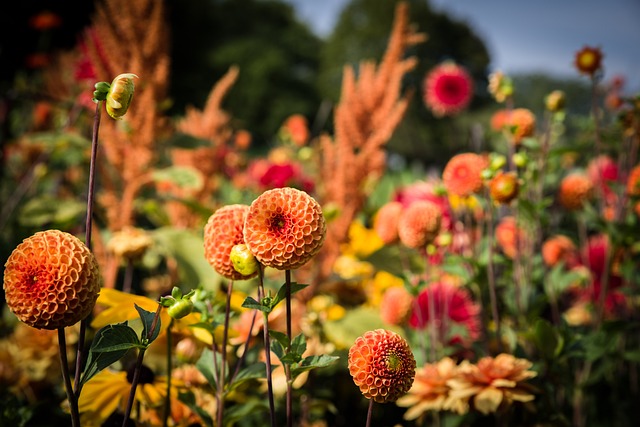Whether you’re a novice gardener or an experienced green thumb, creating a flower garden is an absolute joy.
In this comprehensive guide, we will explore how to design a flower garden, covering everything from planning and layout to selecting the right plants at every stage.
Flower gardens should be designed with a purpose in mind, then you can start to evaluate your site and plan the layout. Select flowers based on size, interest and bloom time.
Planning Your Flower Garden
Define Your Garden’s Purpose
Before you start digging and planting, it’s essential to define the purpose of your flower garden. What do you want to achieve with this space? Your garden’s purpose will influence its design and the type of flowers you choose. Some common garden purposes include:
Aesthetic Beauty
- Creating a visually appealing garden that enhances the overall appearance of your property.
- You may also want to entertain in your garden.
- Consider striking flowers and statement plants that you can talk to your friends about.
- Hellebores have a unique look, as do “Night Sky” petunias.
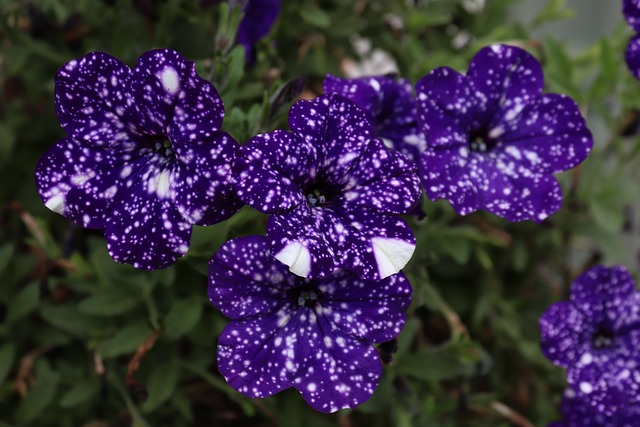
Relaxation and Meditation
- Designing a tranquil space where you can unwind and find solace in nature.
- Consider calming colours such as whites, blues and purples.
- Climbers like clematis and passion fruit vine have stunningly beautiful flowers.
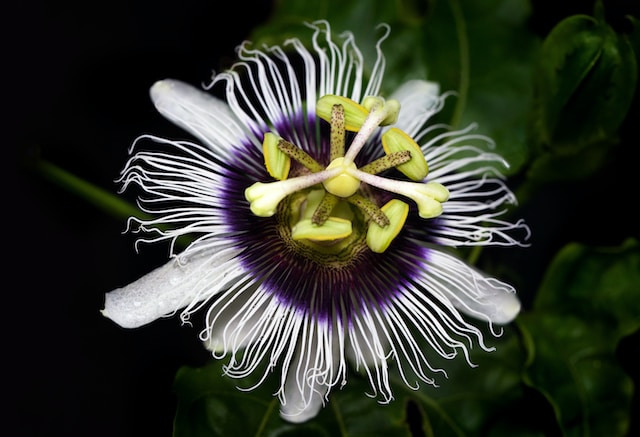
Wildlife Habitat
- Attracting and supporting local wildlife like birds, bees, and butterflies.
- Native plants are well-suited to your region’s climate and will require less maintenance.
- Wildflowers like poppies and cornflowers will attract pollinators to your garden.
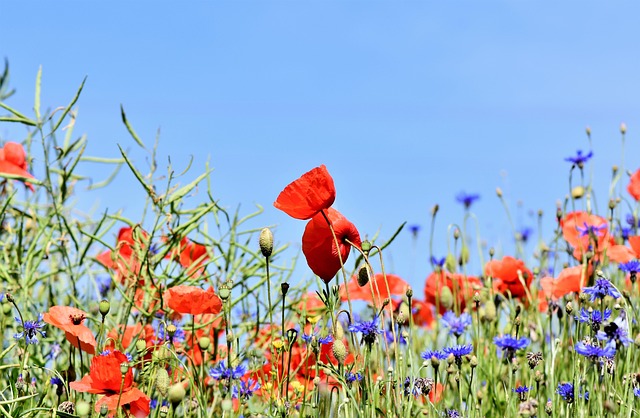
Cut Flower Garden
- Cultivating flowers for use in bouquets and arrangements.
- Dahlias, peonies, tulips, sunflowers, zinnias, chrysanthemum and sweet peas are all popular choices for cut flowers.
- Flowers can also be dried for display.
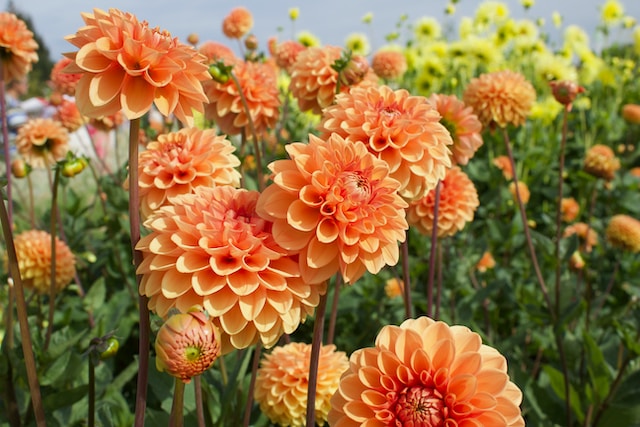
Vegetable Companion Garden
- Planting flowers alongside vegetables to enhance pollination and pest control.
- Marigolds and nasturtiums are great for pest deterrence due to their strong fragrance.
Evaluate Your Site
Assessing your garden site is crucial for making informed design decisions. Consider the following factors:
Sunlight
- Determine the amount of sunlight your garden receives throughout the day.
- Different flowers have varying sunlight requirements, so this will influence your plant selection.
- Some flowers face the sun (like sunflowers) and so would be better positioned so you can see their blooms (rather than your neighbour getting the best display over the fence!)
Soil Type
- Test your soil to understand its composition, pH level, and drainage capacity.
- Adjusting your soil may be necessary for some plants.
- Roses for example need good rich soil, while herbs like chives and lavender need less nutrients but prefer well draining soil.
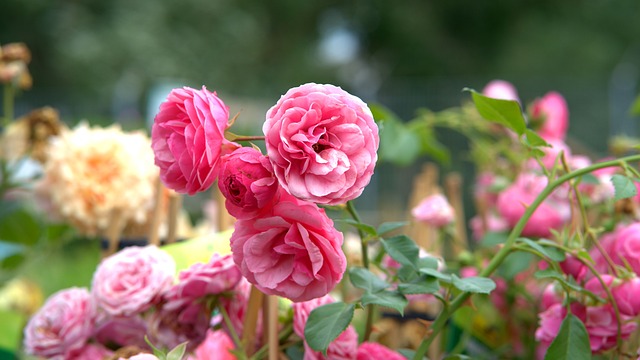
Climate and Hardiness Zone
- Identify your hardiness zone to choose flowers that can thrive in your region’s climate.
Available Space
- Measure the available space for your garden, keeping in mind any existing structures, pathways, or obstacles.
Views and Focal Points
- Take into account any desirable or undesirable views from your garden and plan focal points accordingly.
Choose Your Flowers
Perennials vs. Annuals
- Decide if you want a garden with perennial plants that come back year after year like roses, or annuals that provide a season of vibrant colour.
- Annuals like lobelias will need to be grown from seed each year.
- You can aim to have a mixture of the two.
Colour Scheme
- Decide on a colour scheme for your garden.
- You can go for a monochromatic scheme or a combination of complementary colours.
- Mix plants with different colours and textures to add interest and variety.

Popular Flowers and When They Bloom
- Choose flowers with staggered bloom times to ensure continuous colour throughout the growing season.
| Season | Blooming Flowers |
|---|---|
| Spring | Crocus, hyacinth, daffodil, tulip, forsythia, flowering currants |
| Summer | Peony, clematis, phlox, begonia, rose, dahlia |
| Autumn | Cosmos, aster, nasturtium, heather, petunia, geranium |
| Winter | Hellebores, Camellia, cyclamen, winter pansies |
Design Your Garden Layout
The next step is to design the layout of your flower garden, and consider the planting. There are several layout options to consider:
Formal Garden
- Features structured, symmetrical designs with defined lines and geometric shapes.
- Often uses hedges, topiaries, and geometric plantings.
- Hydrangea is a great choice here as the plant can be grown as a spherical bush with fantastic flowerheads from summer right through to late autumn.
Informal Garden
- Embraces a more natural style with curved pathways, flowing lines, and a mix of plant varieties.
- Cosmos are a great choice for an informal garden, adding height and colour from the summer right through until winter.
Cottage Garden
- Exudes a quaint, old-fashioned charm with a profusion of flowers in a random, unplanned fashion.
- Tall flowers like hollyhocks, lupins, wallflowers and foxgloves produce wonderful spikes of colour.
- This works alongside ground cover planting in the form of heathers and coneflowers like echinacea to create a relaxed but joyful display.
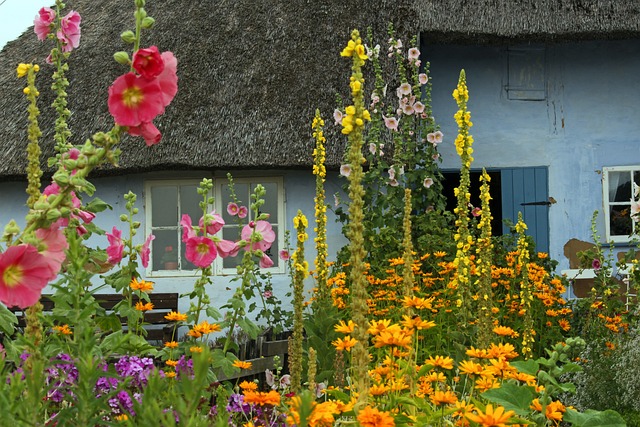
Butterfly or Wildlife Garden
- Specifically designed to attract and support butterflies, bees, and other wildlife.
- Plants with purple flowers like buddleia, salvia and lavender as these are perfect for attracting pollinators.
Water Garden
- Incorporates water features like ponds, fountains, or streams into the garden design.
- You could also have a bog garden for plants that like wet conditions.
- Flowers like canna lilies, irises and marsh-marigold are happy in moist soil.
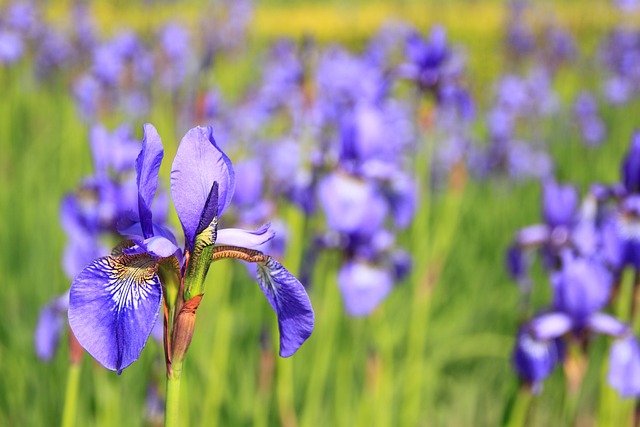
Herbaceous Border
- Focuses on long, deep borders with an array of perennials and annuals for a continuous display of colour.
- Place taller plants towards the back and shorter ones at the front to create depth and perspective. Pay attention to the mature height and spread of the plants to avoid overcrowding.
- Popular flowers for height at the back of the border are verbena bonariensis and delphiniums.
- In the middle consider globe like flowers such as alliums, sea holly and agapanthus for interesting structural shapes, even as they turn to seed heads.
- To soften the front edges, consider hardy geraniums and asters.
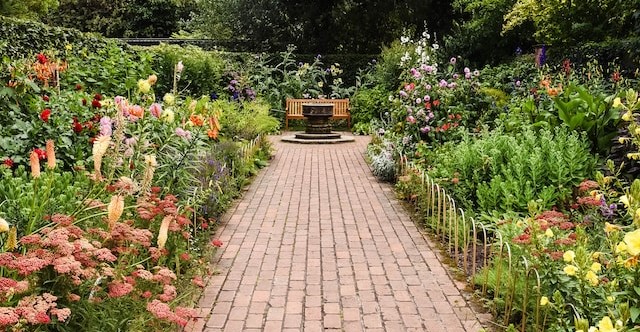
Walled Garden
- Often walled on all sides, sometimes just on some, this will depend on existing walls you already have, and want to showcase or utilise.
- Great for growing fruit or climbers, depending which way the wall faces. Fruit trees and climbing roses like sunshine and so are great for south or west facing walls. Flowering vines that don’t mind shade like climbing hydrangea will do well on east or north facing walls.
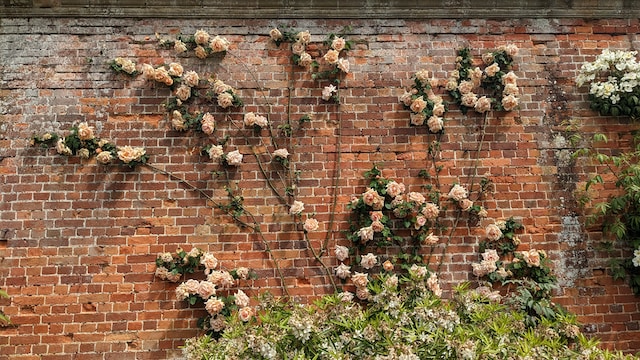
Sketch Your Garden Design
Once you have chosen a layout, create a rough sketch of your garden layout to visualize your ideas. It doesn’t need to be elaborate, but it should include key elements like flower beds, pathways, and focal points. Consider the following design principles:
- Balance. Aim for visual balance by evenly distributing the elements within your garden.
- Focal Points. Create focal points that draw the eye and add interest. These could be statues, benches, or particularly striking plants.
- Repetition. Repeating certain elements, such as plant groupings or colours, can create a harmonious and cohesive design. Arranging your plants in groups can create a more visually appealing garden. Grouping plants based on their characteristics can create a harmonious and balanced look.
- Scale and Proportion. Ensure that the size of your garden elements is in proportion to the overall space.
- Unity. Choose a consistent theme or colour scheme to tie your garden together.
- Interest. Combine plants with diverse shapes and forms for a dynamic and visually engaging garden.
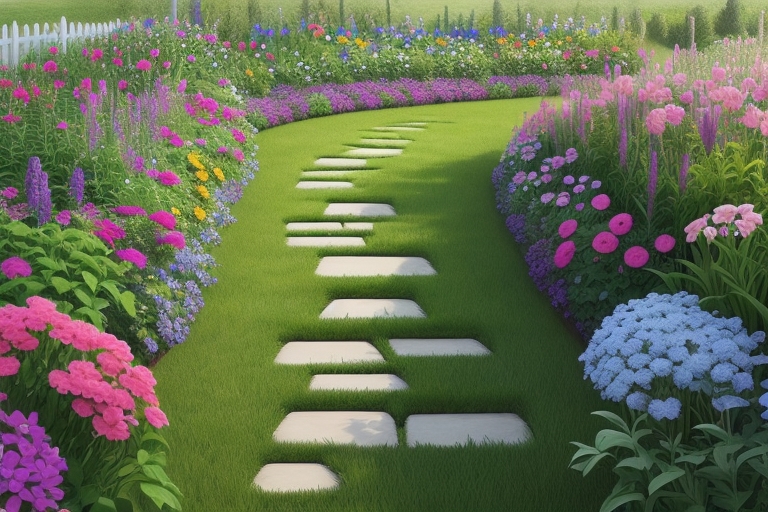
Building Your Flower Garden
Now you have all your plans, sketches and flower choices in place, it is time to begin the physical building of your flower garden!
Soil Preparation
Proper soil preparation is essential for the success of your flower garden. Before planting, you should:
- Amend the Soil. Based on your soil test results, add organic matter like compost to improve soil structure and fertility.
- Soil Drainage. Ensure your garden bed has adequate drainage to prevent waterlogged roots.
Planting Your Flowers
When planting your flowers, follow these general guidelines:
- Plant at the Right Depth. Follow the planting depth recommendations for each type of flower.
- Spacing. Space plants according to their mature size to prevent overcrowding.
- Watering. Water newly planted flowers thoroughly and consistently to help them establish roots.
- Mulch. Apply mulch around your plants to conserve moisture, suppress weeds, and regulate soil temperature.
Maintaining Your Flower Garden
Watering
Proper watering is vital to the health of your flower garden. Consider the following watering tips:
- Consistency. Water consistently to keep the soil evenly moist. Irregular watering can stress plants.
- Morning Watering. Water in the morning to allow leaves to dry, reducing the risk of fungal diseases.
- Drip Irrigation. Install a drip irrigation system for efficient and targeted watering.
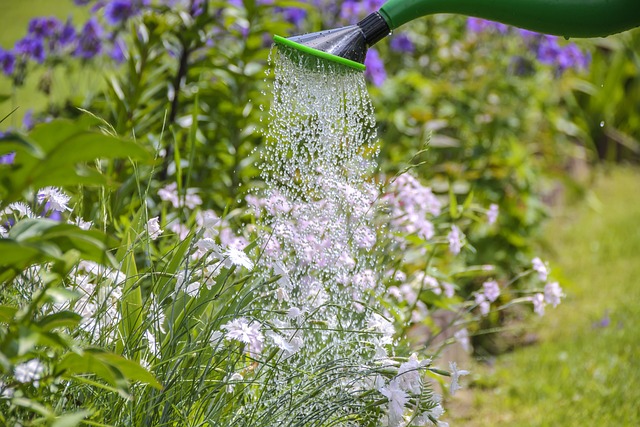
Pruning and Deadheading
Pruning and deadheading are essential tasks for maintaining the appearance and health of your garden.
- Pruning. Trim back overgrown or dead branches to encourage healthy growth.
- Deadheading. Remove spent flowers to promote continuous blooming and prevent seed production.
Pest and Disease Management
Keep an eye out for common garden pests and diseases, and take prompt action to control them. Some strategies include:
- Companion Planting. Use companion plants to deter pests naturally.
- Organic Pest Control. Utilise organic methods like neem oil or insecticidal soap for pest control.
- Proper Hygiene. Maintain good garden hygiene by removing diseased plant material promptly. Keep tools clean and sanitised to prevent cross contamination between plants.
Fertilisation
- Fertilise your garden to provide essential nutrients to your plants.
- Be mindful of the specific needs of your flower varieties, as some may require more nitrogen, phosphorus, or potassium than others.
Seasonal Maintenance
Your flower garden’s needs will change with the seasons. Consider these seasonal tasks:
- Spring. Prune, divide, and add new plants. Prepare for the growing season.
- Summer. Continue deadheading, monitor for pests, and water as needed.
- Autumn. Clean up and prepare the garden for winter. Plant spring-blooming bulbs.
- Winter. Consider winterizing plants with mulch or protective coverings in cold climates.
More Flower Garden Design Ideas
Garden Paths and Structures
- Incorporate pathways and garden structures to add character to your garden. Create winding or straight paths to guide visitors through your garden.
- Use trellises and arbours to separate areas of the garden while also supporting climbing plants like roses and clematis.
- Add sculptures, decorative elements, and outdoor art to enhance your garden’s aesthetic.
- Large stone planters packed with trailing flowers can create a stunning focal point.
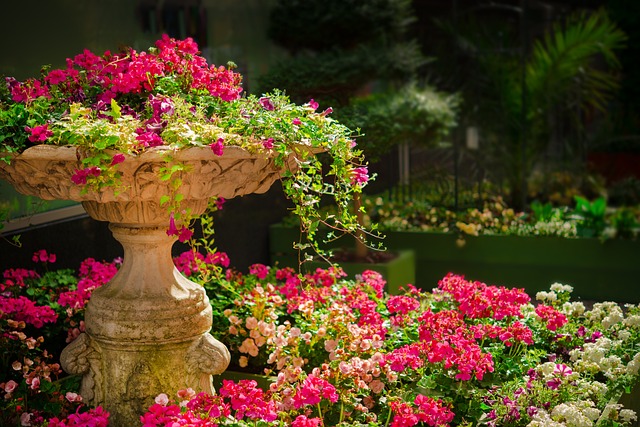
Garden Lighting
- Outdoor lighting can transform your garden into an enchanting space at night.
- Use solar-powered or low-voltage lighting to highlight specific areas and paths.
- String fairy lights can create a wonderful ambience.
- Fire pits, chimeneas and lanterns can provide both light and warmth for cooler evenings.
Garden Seating
- Integrate seating areas into your flower garden design, providing a comfortable place to enjoy the beauty of your flowers.
- Hammocks and swing seats offer relaxing options for hot summer days.
- Bistro sets can be perfect for that early morning coffee.
- Larger dining tables invite that alfresco lifestyle.
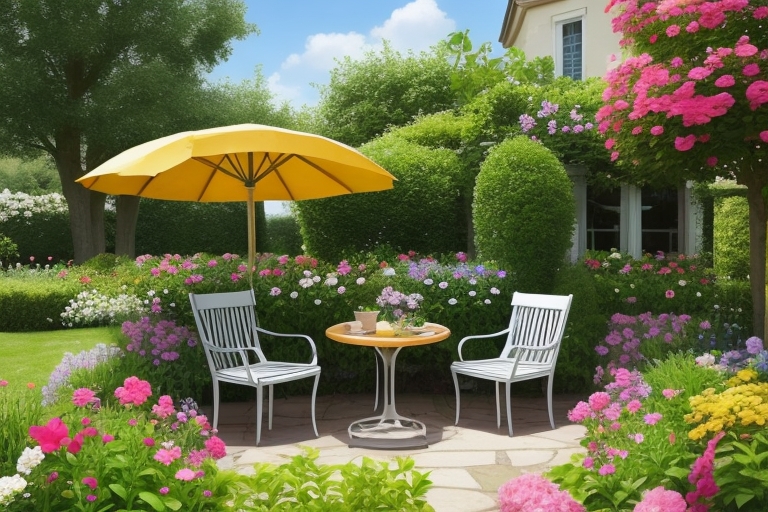
Final Thoughts
Designing a flower garden is a fulfilling and artistic pursuit that offers a wide range of benefits.
Whether you’re looking to create a serene retreat, attract wildlife, or simply add colour, beauty and fragrance to your surroundings, careful planning and thoughtful design will be key to your success.
Remember to select the right plants, tend to your garden with care, and adapt to the changing needs of the seasons.

